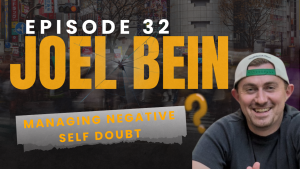Silence around strain and behavior is not absence of conflict. It is the condition in which conflict deepens, burnout spreads, and disengagement takes root. When leaders avoid direct conversations about workload, ignore signs of exhaustion, or dismiss subtle changes in interpersonal dynamics, they diminish psychological safety at work. The effect is cumulative: employees stop raising concerns, conflicts go unresolved, and boundary violations become normalized.
Organizational cultures that cannot integrate conflict resolution in the workplace or recognize the importance of setting boundaries at work often misinterpret the visible signs of burnout as isolated performance issues. What looks like detachment is often exhaustion. What appears as conflict may reflect unspoken pressures. The longer silence persists, the more expensive and disruptive the consequences.
Leadership requires an early, deliberate response. Addressing burnout, boundaries, and behavioral red flags directly does not only preserve morale. It protects retention, stabilizes culture, and signals that well-being and accountability are non-negotiable.

Burnout and Red Flags as Leadership Blind Spots
Burnout is no longer a marginal concern. The World Health Organization classifies it as an occupational phenomenon with measurable consequences for health and performance. Studies demonstrate that environments with higher psychological safety at work reduce both emotional exhaustion and depersonalization, even in high-stress sectors like healthcare (de Lisser et al., 2024). In contrast, cultures where stress cannot be voiced accelerate disengagement and exit.
Behavioral red flags compound the problem. Persistent incivility, avoidance of accountability, or repeated interpersonal conflict often precede wider cultural breakdowns. Leaders who overlook these patterns because they appear minor or temporary underestimate their cumulative effect. Silence around behavior teaches employees that norms of respect and collaboration are flexible, which corrodes trust.
The blind spot for many managers is assuming that silence equals stability. In practice, silence is more often an early indicator of risk.
Creating Psychological Safety Through Leadership Practice
Psychological safety does not emerge from a policy document. It is established through small, consistent signals that it is safe to speak, to question, and to disagree. Research shows that psychological safety and feeling heard are distinct, and both significantly reduce burnout (Kerrissey et al., 2022). Leaders must therefore create space for expression and demonstrate that expression leads to acknowledgment, not dismissal.
Structured check-ins are one of the most reliable tools. These are not performance reviews but relational conversations designed to surface concerns early. When managers approach check-ins with curiosity and restraint, employees are more willing to share workload pressures or interpersonal strains. The act of being heard mitigates stress, while the organizational response determines whether stress escalates into burnout.
Open research from Indian IT firms further demonstrates that psychological safety at work mediates the relationship between organizational support and performance outcomes (Jindal, 2024). Support alone is insufficient without safety; employees must feel that using support channels will not lead to penalty.
Leaders who cultivate this environment address burnout before it becomes systemic and identify behavioral red flags while intervention is still feasible.
Boundaries as a Core Element of Resilience
Boundaries protect focus, autonomy, and recovery. Yet in many organizations, setting boundaries at work is treated as reluctance rather than responsibility. Employees who decline late-night messages or question excessive workload are often stigmatized, despite evidence that blurred boundaries accelerate burnout and reduce productivity.
Psychological safety is central here as well. A longitudinal study of organizational change found that when employees felt less safe to express their limits, job burnout increased and commitment declined (Qi, 2021). By contrast, when safety and clarity around boundaries were present, employees adapted more effectively to uncertainty.
Leaders signal the acceptability of boundaries through their own conduct. Respecting time off, clarifying workload expectations, and discouraging performative overwork all normalize healthy limits. Far from reducing engagement, these practices extend organizational resilience by ensuring that employees can sustain performance without chronic exhaustion.
Conflict Resolution as a Leadership Discipline
Conflict is inevitable. How it is handled determines whether it becomes destructive or constructive. A recent open-access study highlights that structured approaches to conflict resolution in the workplace, including feedback training, mediation, and emotional intelligence practices, strengthen collaboration and prevent escalation (Bhakuni, Rana, & Bhanot, 2024).
Effective conflict resolution requires distinguishing between behaviors and identities. Leaders who frame disputes in terms of observable actions depersonalize conflict and open space for solutions. Failure to intervene, in contrast, validates toxicity and undermines psychological safety. Employees learn that harmful behaviors will not be addressed, which amplifies disengagement.
The leadership task is to approach conflict with precision and consistency. Early recognition, fair process, and explicit reinforcement of organizational norms prevent disputes from spiraling into cultural fractures.

Sustaining Well-Being Through Leadership Rituals
The practices that reduce burnout, reinforce boundaries, and manage conflict are most effective when embedded into organizational rhythm. Research underscores that initiatives only matter when sustained, and that cultural reinforcement is what protects gains over time (Qi, 2021).
This requires leaders to institutionalize regular check-ins, normalize conversations about boundaries, and treat conflict resolution as an expected managerial skill rather than an escalation point. Psychological safety, boundary clarity, and conflict resolution must be visible in daily interactions rather than episodic interventions.
Sustaining well-being is not a wellness program. It is a leadership responsibility.
Frequently Asked Questions
What are early signs of burnout at work?
Reduced engagement, withdrawal from collaboration, irritability, and sustained decline in performance are common indicators. Leaders who respond early prevent systemic escalation.
How can leaders set boundaries without seeming disengaged?
By presenting boundaries as structures that sustain focus and productivity. Leaders who model limits while staying present show that boundaries enable performance rather than hinder it.
What behavioral red flags require immediate attention?
Persistent incivility, avoidance of accountability, manipulative behavior, or repeated conflict with peers signal deeper cultural risks. Direct intervention affirms expectations and protects psychological safety.
Leadership Beyond Silence
Burnout, boundary violations, and behavioral red flags are rarely sudden. They are progressive, unfolding silently when organizations lack the conditions for openness. Leaders who recognize this and actively protect psychological safety at work, integrate conflict resolution in the workplace, and normalize setting boundaries at work not only prevent cultural erosion but strengthen engagement and retention.
Silence may feel safe in the moment, but it is the greatest long-term risk. Addressing well-being and behavior directly is not a discretionary choice. It is a measure of leadership integrity and organizational durability.




































